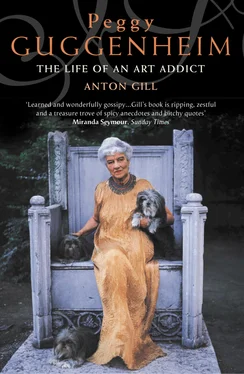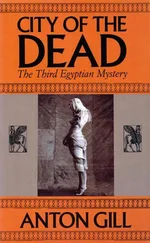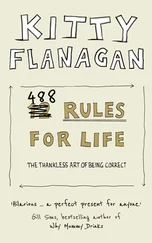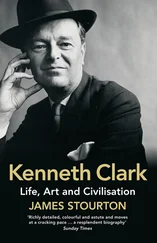Ample reasons for his pique at Peggy’s behaviour can be found in Laurence’s novel Murder! Murder!. Written in the closing years of the marriage, it is an account of the near-hysterical relationship between its protagonists, Martin Asp and his wife Polly (in Vail’s unpublished memoir Here Goes , Peggy appears under the equally thin guise of Pidgeon Peggenheim). Even allowing for the prevalent anti-Semitism of the time, the novel is particularly unpleasant about the Jews, and though at its most extravagant it shows the influence of Lautréamont’s Maldoror , the 1868 novel which had such a profound effect on the Surrealists, and describes a man possessed of a singularly nasty imagination, it nevertheless also displays a rather dutiful attempt to ‘horrify the bourgeoisie’. But while the book is honest, and skilfully exposes some of Peggy’s less attractive traits, such as an obsession with the details of petty spending, and an obstinate, ingrained selfishness, a huge resentment is apparent. Laurence (in the character of Martin Asp) describes how his sleeping wife’s lips ‘move as she dreams of sums’, and says ‘it makes her nervous to follow one train of thought for any length of time. She goes in for action. She tries to reckon out how much money she has spent on tips since the first of June.’
In their own recollections, each partner paints the other in darker colours than they deserve, but one longer passage from the novel can be quoted without comment (except to express the hope that some of it is meant ironically) to complement that quoted above from Peggy’s autobiography:
Suddenly, even while I speak and drink, my brain expands, parts, opens. It will be a great thing, the great thing I shall do – a very great thing. A little later, when I am kindly drunk, I shall, magnanimously, fundamentally, make it up with my young wife. It will be a great thing – this making up. For we have been quarrelling for nearly fifty hours.
Forty-six hours ago I had been reading one of my poems to a friend. Now it is not often that I thus hazard friendship. On this occasion, however, the friend had particularly insisted. Three times I met his odd request with fairly firm refusals. The fourth, I weakened. Too much false modesty, I argued, is bad for the morale; I may suddenly feel modest. And why not, just this once, give myself a treat? Besides, my friend might not ask a fifth time.
And now to Poll. Since Sunday noon she had been reading a novel of Dostoyevsky. She had read 114 pages on Saturday, 148 on Sunday, 124 on Monday, on this day, Tuesday, 96. Still the night was young. She was in form. She might still break her record.
Meanwhile, disrespectful of these facts, I settled myself in my chair, happily began reciting:
Some who believe in GodTake pills.
Some patient womenLean perhaps with stout hopePerhaps behind their hungry featuresHopeless …
It was at this moment that I became aware of a loud continuous whisper. I glanced up. Polly was leaning over her book, her lips were moving. My recital, it was evident, interfered with her concentration; still, by murmuring the words quite loud, she could manage not to hear me. She still hoped, if not to achieve a record, to equal her daily average of 130 pages.
Abruptly, I stopped reciting. My silence, I thought, will certainly move her to repentance and confusion. I was mistaken. Now, unimpeded by my own gloating voice, I could hear the words of the immortal Russian …
Suddenly I lost my temper. Then, with sarcasm:
‘Sorry, if I disturbed you.’
She glanced up with bright friendly eyes: ‘Oh not at all. Do go on with your poetry.’
My friend laughed lightly. ‘Don’t you like Martin’s poem?’
‘A lot. But, you see, I’ve heard it once already.’
I bit my tongue. ‘My mistake. I thought you could stand a second reading.’
‘Go on,’ said my friend. ‘Let’s hear the rest of it.’
I shook my head. Who was I, after all, to compete with Dostoyevsky? … My temper rose. Carefully tearing my manuscript in two parts, I turned my back on both friend and wife, concealed the fragments in my pocket.
When finally after ten minutes my friend left, I gave vent to my indignation:
‘You should have married a Wall Street broker. Or a Russian taxi-driver.’
I continued in this strain for upwards of two hours, including in my torrent of reproach my wife, her mother, her sisters, her cousins, her aunts, her uncles, in short, a considerable part of the Jewish people. Still, had she at any time during this period knelt or wept, I would, eventually, have vouchsafed her my forgiveness. Not once, however, did she show the slightest sign of ardent love, of deep, complete repentance. Several times, probably noting I was embarked on a symphony of abuse whose themes to develop must take at least some minutes, her eyes would quickly stray towards ‘The Brothers Karamazov’. Once, having turned my back, I heard, or thought to hear, the dry sound that a page makes when a hand turns it over.
In the meantime, though Peggy does make one reference in her memoirs to anxiety on its behalf, their child crouched in the womb, its welfare largely unheeded.
In the meantime, too, Laurence carried on his role as King of Bohemia, largely by virtue of having enough money to throw parties, and through him Peggy immersed herself more and more in the expatriate cultural life of Paris. The waves of newcomers continued unabated as the 1920s progressed. Matthew Josephson, who had returned to New York after the collapse of Broom in 1923, but, disliking the respectable Wall Street job he had taken, went back to Paris with his wife in 1927, was struck by the speed of the change wrought upon the Left Bank by the new influx of Americans: ‘Our ship alone had brought 531 American tourists in cabin class … There were certain quarters of Paris that summer where one heard nothing but English, spoken with an American accent … The barmen [were] mixing powerful cocktails, dry martinis, such as one never saw there in 1921 or 1922.’ Away from Prohibition, Americans relaxed. Everybody drank. Most people drank too much at one time or another. Drinking was part of the culture, and one regret was that the French authorities had banned the sale of true absinthe, the ruling drink of the 1890s. True absinthe has a spirit base in which the flowers and leaves of wormwood are instilled, together with star anise, hyssop, angelica, mint and cinnamon. Dull green in colour, the toxic qualities of absinthe led to its proscription: it had a percentage proof of between fifty and eighty-five. John Glassco, who managed to get hold of some in Luxemburg, left a vivid reminiscence of its effect:
The clean sharp taste was so far superior to the sickly liquorice flavour of legal French Pernod that I understood the still-rankling fury of the French at having that miserable drink substituted for the real thing in the interest of public morality. The effect also was as gentle and insidious as a drug: in five minutes the world was bathed in a fine emotional haze unlike anything resulting from other forms of alcohol. La sorcière glauque , I thought, savouring the ninetyish phrase with real understanding for the first time.
By 1928, Scott Fitzgerald could write that Paris ‘had grown suffocating. With each new shipment of Americans spewed up by the boom the quality fell off, until towards the end there was something sinister about the crazy boulevards.’ The Dôme, which had been the social centre and bush-telegraph office, the place you went to find a job or a place to stay, became so swamped by Americans that ‘real’ artists moved down the road to the Closerie des Lilas, where Hemingway sat and wrote. A literary crowd centred on the Hôtel Jacob; its numbers included Djuna Barnes, Sherwood Anderson, Edna St Vincent Millay and Edmund Wilson. The photographer Man Ray and his mistress, the model Kiki (Alice Prin), who wore extraordinary make-up designed by him, also formed part of the circle: ‘Her maquillage,’ wrote Glassco of Kiki, ‘was a work of art in itself: her eyebrows were completely shaved and replaced by delicate curling lines shaped like the accent on a Spanish “n”, her eyelashes were tipped with at least a teaspoonful of mascara, and her mouth, painted a deep scarlet that emphasized the sly erotic humour of its contours, blazed against the plaster-white of her cheeks on which a single beauty-spot was placed, with consummate art, just under one eye.’
Читать дальше












